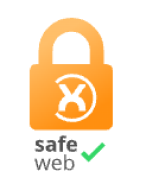The use of eco-labels varies according to sector and customer demand, but companies find long-term benefits in terms of customer satisfaction and access to new markets. Society and consumers are increasingly interested in environmental information on packaging, although there is currently a saturation of labels and information, which can lead to confusion. New labeling and marking technologies offer quicker and easier ways to complement the information on packaging. In this article we show you how:
What is eco-labeling?
Eco-labeling for packaging is a labeling system that provides information to consumers and other businesses about the environmental characteristics of a particular product. It is used to communicate clearly and concisely the environmental impact of the packaging, from its manufacture to its final disposal.
This type of labeling usually includes symbols, logos or textual information that informs, among many others, about aspects such as:
- Material used
- The percentage of recycled material
- Carbon footprint
- Biodegradability
- Consumption of natural resources
The main objective is to enable consumers to make more informed choices and to identify those products that are more environmentally friendly.
Eco-labeling for packaging can also consider criteria and standards set by international or governmental organizations, thus providing an objective and reliable basis for assessing environmental impact.
Are eco-labels mandatory?
Ecolabels are NOT mandatory today in any country in the world, with the exception of Japan, China and South Korea, which have mandatory national systems for certain products and services.
Even so, they are highly recommended, so their use is entirely voluntary.
In what color and how should I print an eco-label?
Each eco-label has different technical specifications of color and size, that is why we must consult this information with the organization in charge, once we have obtained the license to print our eco-label on the product.
Even so, many of them have their public use guides on the web, as is the case of the «Fairtrade» or the «MSC» ecolabel.
Why is eco-labeling important in the packaging sector? Does it increase sales in the short term?
iHobe and Ecoembes conducted a study in 2018 on the perception of environmental labeling in companies and consumers. These were the results they obtained:
- Society and consumers are demanding ecological information on products, communicated through packagingTherefore, the packaging sector is very sensitive to the use of environmental labels whose use is increasingly widespread.
- There is a need for consumers to have clear and summarized environmental information that allows them to compare the environmental characteristics of one product with another.
- Companies say that short-term sales are not particularly increased by whether or not eco-labels are available, but customer satisfaction and the potential for access to new markets are increased, so investments in this area are rewarded satisfactorily.
What types of eco-labels are and what do they mean?
Ecolabels with environmental information can be divided into three main groups according to their category. Here is a summary table of what you will find in this article:

LABELS WITH ECOLOGICAL INFORMATION
Eco-labels «Best in Class» recognition system:
It indicates that the product has complied with a series of requirements that imply a lower ecological impact compared to other similar products available on the market. Within this category there are two subcategories: Type I labels and Semi-Type I labels.
Type I labels
strong class=»cblue»>They establish exhaustive criteria covering the entire product life cycle, following a «comply/non-comply» approach for various ecological aspects. To be certified, it is necessary to fully comply with the requirements defined in accordance with the UNE-EN ISO 14024:2001 standard.
| Logo |
Name |
Where it is used |
 |
European Ecolabel |
Its use is widespread throughout the European Union. |
 |
Blue Angel (Der Blauer Engel) |
Mostly in Germany, although it can also be found in the rest of Europe. |
 |
NF Environnement (AFNOR) |
Mostly in France, although it can also be found in the rest of Europe. |
 |
Nordic Swan Ecolabel |
Limited to products in Nordic countries such as Denmark, Finland, Iceland, Norway and Sweden. |
Semi type I labels
They are mainly focused on the packaging sector, and focus on relevant aspects related to wood, paper and cardboard.
| Logo |
Name |
Where it is used |
 |
FSC (Forest Stewardship Council) |
Worldwide |
 |
PEFC (Programme for the Endorsement of Forest Certification) |
Worldwide |
Self-declared eco-labels:
They provide information on the ecological criteria of the products selected by the manufacturers. Within this category are type II labels.
Type II Labels
| Logo |
Name |
Where it is used |
 |
Moebius triangle: Indicates that the material is recyclable. |
Worldwide |
 |
Moebius triangle with percentage: Indicates that the packaging material or product is made with a % of recycled material. |
Worldwide |
Do you find this article interesting? Find exclusive content like this in our monthly newsletter
Eco-labels as evaluation and comparison instruments:
They provide information on the impacts of the life cycle of the products, without necessarily requiring the fulfillment of specific requirements. Among them we find:
Carbon Footprints:
They are a transparency mechanism rather than an award or recognition for meeting criteria.
| Logo |
Name |
Where it is used |
 |
Carbon Trust |
Mostly in the UK, although it can also be found in other countries. |
 |
AENOR MA Co2 |
Only in Spain |
 |
CarbonNeutral |
Worldwide |
Environmental Product Declarations:
These are documents that provide transparent and verifiable information, supported by an independent third party. These documents disclose data related to the environmental performance of the certified product, based on a Life Cycle Assessment (LCA) of the product.
| Logo |
Name |
Where it is used |
 |
International EPD System |
Internacional |
 |
Global EPD |
Solamente en España |
Product Environmental Footprints:
The main objective is to standardize how to demonstrate and communicate that a particular product has a better environmental performance in order to sort out the wide variety of existing labels and seals, which often confuse both value chain actors and consumers.
| Logo |
Name |
Where it is used |
 |
Product Environmental Footprint (PEF) |
European Union |
Most Important Eco-labels in the United States
In addition, there are some labels that are only popular in one country, while outside it is less common to see them.
The most popular in the United States are:
| Logo |
Name |
Where it is used |
 |
Green C |
United States |
 |
Green Seal Certified |
Mostly United States, but can also be found in other countries. |
 |
USDA |
Mostly United States, but can also be found in other countries. |
How do I apply an eco-label to packaging?
To print or apply an eco-label to your packaging you must first decide on the type of packaging you wish to apply it to.
With primary packaging
If you are looking to print your label directly onto primary packaging, our Thermal Inkjet printers are the solution. With them you can print directly on porous and non-porous surfaces in a clean and simple way your eco-label, as long as it does not exceed 1.27 cm in height.

With secondary packaging
If you are looking to apply this label on a secondary packaging such as a box, sack, barrel, etc. we offer two solutions:
- Direct printing on any surface with our APLINK equipment.
- Labeling on packaging with our APL35s printing and label application system designed for label application in any position.


























